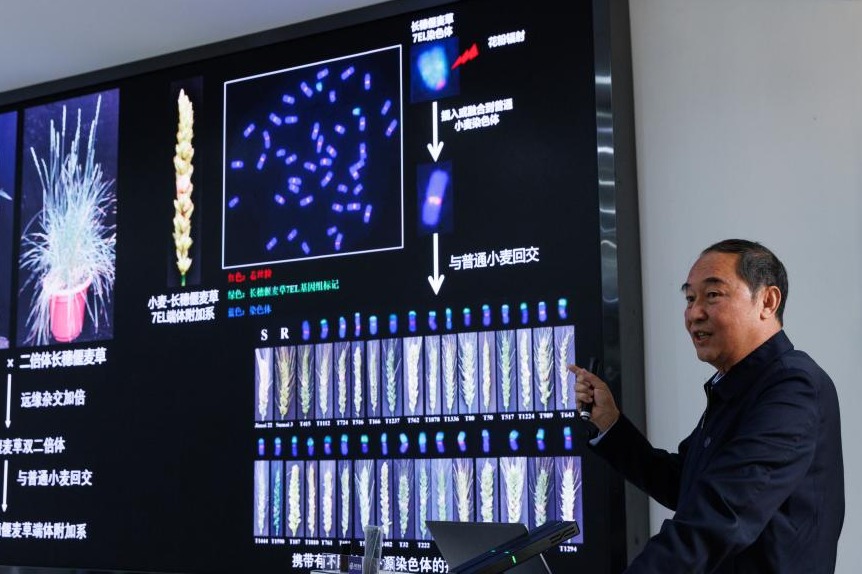ALL CREATURES GREAT AND SMALL
Former doctor preserves the natural legacy of Dongting Lake through the art of taxidermy, Wang Qian and Feng Zhiwei report in Changsha.

The hundreds of taxidermy displays at the Dongting Lake biodiversity gallery in Sanyantang village, Hunan province, give a glimpse into how prosperous and diverse the natural environment of the area around China's second-largest freshwater lake once was.
Behind these specimens is the 73-year-old taxidermist Li Wenjian, a retired doctor of the Yuanjiang epidemic prevention station in Yuanjiang city, Hunan.
Since 1983, Li has stuffed and preserved more than 1,400 animals, insects and plants from the lake's environs in order to enable people to understand the local flora and fauna better.
"Dongting Lake nurtures a bounty of life, and through taxidermy, some deceased and endangered animals have been brought back to 'life'," Li says, adding that he hopes his creations will help raise people's awareness of the needs to protect the biodiversity of what he calls the "mother lake".
In his eyes, these specimens show respect for the life of the creatures and, what's more, they enable people to reflect on the relationship between people and nature.
Due to the intensification of agricultural practices and re-engineering of the waterways since the 1950s, the lake had been reduced to half its size — from about 6,000 square kilometers recorded in 1852 to less than 2,700 sq km in 2003. As one of the wetlands that make up the floodplains of the Yangtze River, Dongting Lake is an important habitat for migratory waterfowl and other wildlife.
"The lake in my childhood memory has gradually disappeared, which has often worried me," Li says, adding that, in the 1960s, fishermen would frequently encounter finless porpoises and various other wild animals, such as barking deer and weasels.
Born in 1950, he has lived alongside the lake all his life and has witnessed how human activities, such as overfishing and illicit sand mining, have changed the lake and its environment.
A graduate of the Yiyang Medical College, in 1975, the then 25-year-old Li was allocated to a job at the Yuanjiang epidemic prevention station by the local government. Several years later, he attended the epidemiological investigation of leptospirosis (a widespread and prevalent zoonotic disease that can lead to organ failure) in the lake area.
During the investigation, Li made hundreds of taxidermied specimens of wild rats, which had been one of the sources of rodent-associated human infection. Once, on his way to collect rats for examination, he saw a dead thrush that had been killed by pesticide use. Taking it home, he prepared, molded and mounted the deceased bird.
Through his handiwork, he was able to make the bird look "alive "again, which was the moment Li realized what he could do to help his mother lake — to honor the deceased lake dwelling creatures and give them "a new life".
Over the past four decades, Li has created more than 1,400 specimens, from whole taxidermied animals to single pressed flowers, in his spare time. Some of the species in his collection of flora and fauna have since been pushed to endangerment or extinction. For Li, it is a "solemn "task.
"If a species can only be appreciated in this form, as well as feeling regret, we should think further — when people destroy the habitats of animals and plants, how much space do we leave for our own survival?" Li says.
Among his taxidermied works, some rodents and insects are captured and modeled for epidemiological research. Some of these are birds, animals and fish bought from local farmers' markets or restaurants, and some are sent to him by local authorities for taxidermy display or study.
A pair of wild Chinese milu deer are among the most challenging specimens that Li has worked on. In July 2016, the pair were drowned in rising floodwaters at the lake. After salvaging the deer and carrying out a postmortem, the Yuanjiang Forestry Bureau contacted Li to preserve them.
Weighing more than 400 kilograms in total, it took Li one and a half months to get the deer to "stand on their feet" again. He had to conquer the scorching heat of summer and pungent odor of the disinfectant, because if the corpse decayed, the taxidermy would fail.
According to Li, this is a complex process. After measuring the body, the deer is skinned with its meat, skull, bones and internal organs removed. While the skin dries out, the steel-framed mannequin is prepared. After anti-corrosion treatment, the deer is mounted with its skin repositioned around the mannequin, its feet arranged and glass eyes are inserted for the final touch.
"You can't rush any step. One mistake can ruin the whole thing," Li says, adding that the larger the animal is in size, the longer the taxidermy process is.
In sculpting the steel mold for one of the deer, Li's left leg was injured by an electric cutter. To save time, Li didn't go to hospital, he just sutured the wound by himself.
However, when he got the two deer to "stand as if they were alive again", Li's sense of achievement outweighed the difficulties.
"For some people, the practice of taxidermy may seem strange, or even terrifying, but preserving nature through individual lives is still valuable in scientific research and showcases the great diversity of nature to the public," Li says.
Cooperating with Yuanjiang Science and Technology Association, Li has held exhibitions of his specimens on the street and on campus to raise the public awareness about biodiversity and environmental protection.
Last year, the Dongting Lake biodiversity gallery, covering more than 500 square meters, was built to display Li's creations.
Yang Jianjun, Party secretary of Sanyantang village, hopes that the gallery will enrich the cultural lives of local residents and be developed into a scenic spot, bringing more tourists to Sanyantang.
Still not satisfied with the gallery's current condition, Yang says that a company has been hired to renovate it with an investment of about 4 million yuan ($575,222).
At the entrance of the gallery, there are eight rabbits welcoming the visitors, an installation designed by Li to mark the Year of the Rabbit.
Li is also glad to see that dramatic changes have occurred in and around Dongting Lake thanks to the government's efforts. In 2020, a 10-year fishing moratorium was established on the lake.
The population of indicative and endangered species has increased, or has been stabilized, such as winter migratory birds, Chinese milu deer and Yangtze finless porpoises, according to local environmental department.
In February last year, a record-high 404,000 waterfowl, representing 74 species, were spotted at Dongting Lake.
Walking around the lake, Li has seen Chinese mergansers, milu deers and white eels, which he says he finds thrilling, as if meeting old friends.
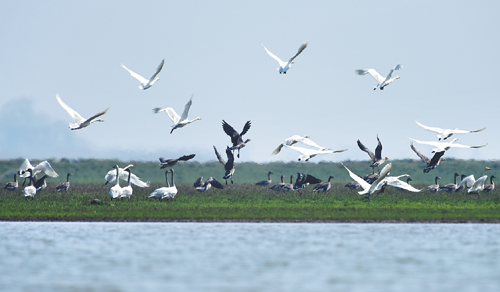
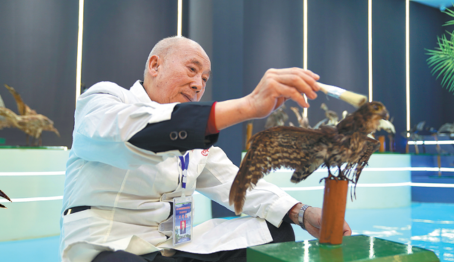
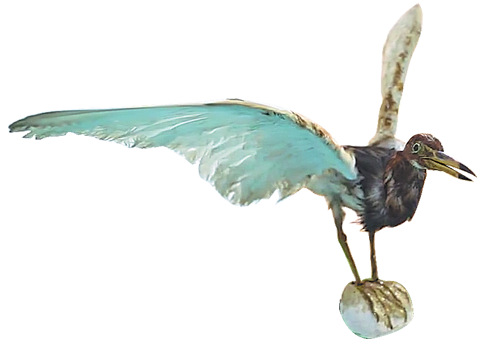
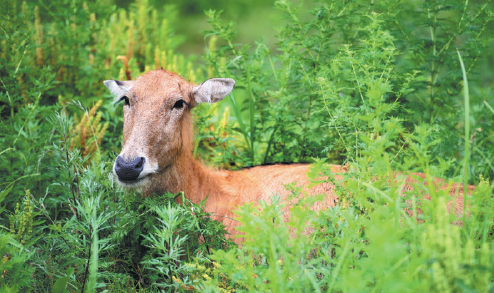
Today's Top News
- Judicial reform critical for modernizing governance
- Effective use of investment emphasized
- China's shuttle diplomacy strives to reach ceasefire
- Nanjing Museum's handling of donated art, relics being probed
- Key role of central SOEs emphasized
- New travel program hailed as 'milestone'






















